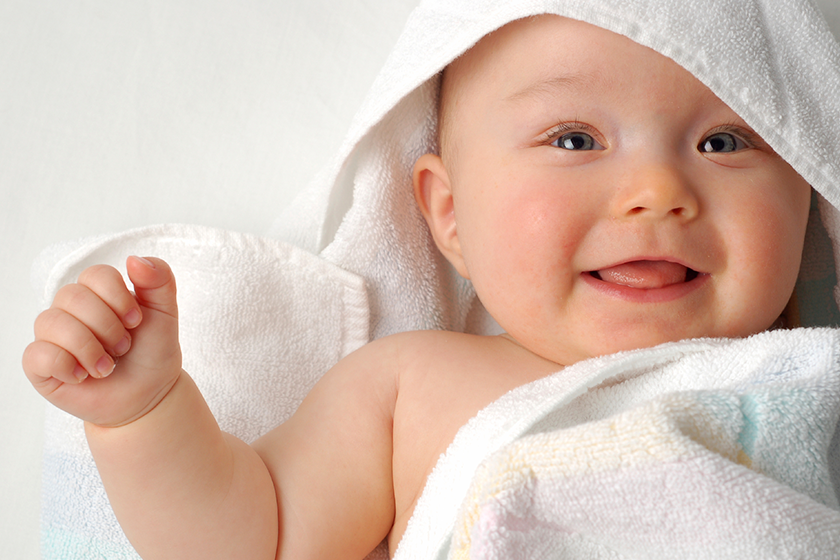Scrub-A-Dub-Dub: Bath Time Safety.
March 4, 2021

How often do babies need a bath once they are home?
Newborns do not need a bath every day. They rarely sweat or get dirty enough to need a full bath that often. Three baths per week during baby’s first year may be enough. Bathing more frequently can dry out your baby’s skin.
Can my baby have a bath before the umbilical cord falls off?
Only give your newborn sponge baths until the stump of the umbilical cord falls off, which usually happens by about one or two weeks of age. If it remains beyond that time, there may be other issues at play. See the baby’s doctor if the cord has not dried up and fallen off by the time the baby is two months old. Learn more here.
How to give a sponge bath. A sponge bath is like a regular bath, except you do not put your baby in the water.
Baby sponge bath safety tips:
- Get supplies ready before you begin. Have a basin of water, a damp washcloth rinsed in soap-free water, a dry towel, and anything else you might need within reach before you begin.
- Lay baby on a flat surface that is comfortable for both of you—a changing table, bed, floor, or counter next to the sink will do. Pad hard surfaces with a blanket or fluffy towel. If your baby is on a surface above the floor, always use a safety strap or keep one hand on them to prevent falls.
- Start washing the face first. Use the dampened cloth to wash baby’s face, being careful not to get water into the eyes or mouth. Then, dip the washcloth in the basin of water before washing the rest of the baby’s body and, finally, the diaper area.
- Keep baby warm. During the sponge bath, wrap your baby in a dry towel and uncover only the parts of her body you are actively washing. Pay special attention to creases under the arms, behind the ears, around the neck, and the genital area.
When is my baby ready for a regular bath?
Once the umbilical area is healed, you can try placing your baby directly in the water. Baby’s first baths should be as gentle and brief as possible.
Baby bathtub safety tips:
Use touch supervision. Have a towel and other bath supplies within reach so you can keep a hand on your baby at all times. If you’ve forgotten something or need to answer the phone or door during the bath, you must take the baby with you.
Start practicing infant water safety now: Never leave a baby alone in the bath, even for an instant. Most child drownings inside the home occur in bathtubs, and more than half of bathtub deaths involve children under 1 year of age.
Check the water temperature. Fill the basin with 2 inches of water that feels warm—not hot—to the inside of your wrist or elbow. If you are filling the basin from the tap, turn the cold water on first (and off last) to avoid scalding yourself or your child. The American Academy of Pediatrics (AAP) recommends that the hottest temperature at the faucet should be no more than 120 degrees Fahrenheit to help avoid burns. In many cases you can adjust your water heater setting to not go above this temperature. Tap water that is too hot can quickly cause burns serious enough to require a hospital visit or even surgery. In fact, hot water scalds are the top cause of burns among babies and young children.
Keep baby warm. Once you have undressed your baby, place them in the water immediately so the baby does not get chilled. Use one of your hands to support their head and the other to guide them in feet first. Talk to her encouragingly, and gently lower the rest of her body until she’s in the tub. Most of her body and face should be well above the water level for safety, so you will need to pour warm water over her body frequently to keep her warm.
Use soap sparingly. Soaps can dry out your baby’s skin. If a cleanser is needed for heavily soiled areas, use only mild, neutral-pH soaps without additives. Rinse soap from the skin right away. Wash baby’s hair two or three times a week using a mild shampoo or body wash.
Clean gently. Use a soft cloth to wash your baby’s face and hair, being careful not to scrub or tug the skin. Massage her entire scalp gently, including the area over her fontanelles (soft spots). When you rinse shampoo from her head, cup your hand across her forehead so the suds run toward the sides, not into her eyes. If some suds do get into her eyes, use the wet washcloth to wipe them with plain, lukewarm water. Wash the rest of her body from the top down.
Get out and dry off. When bath time is finished, promptly wrap a towel around your baby’s head and body to help her stay warm while she is still wet. Gently pat baby dry and apply a small amount of fragrance-free, hypoallergenic moisturizing lotion right after a bath to help prevent dry skin or eczema.
https://babygooroo.com/articles/babys-first-bath
Next Post >>